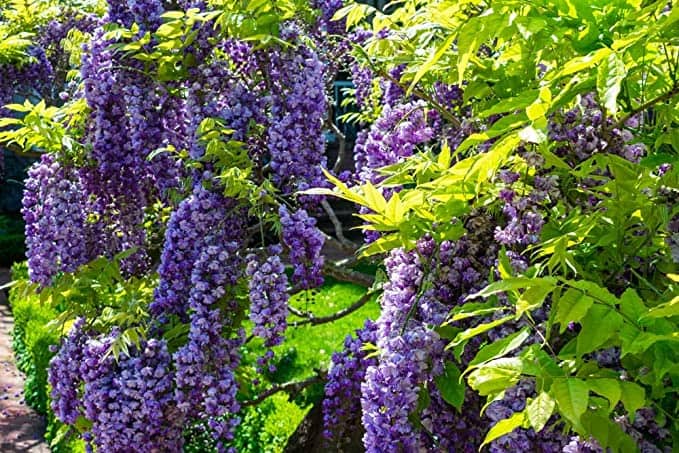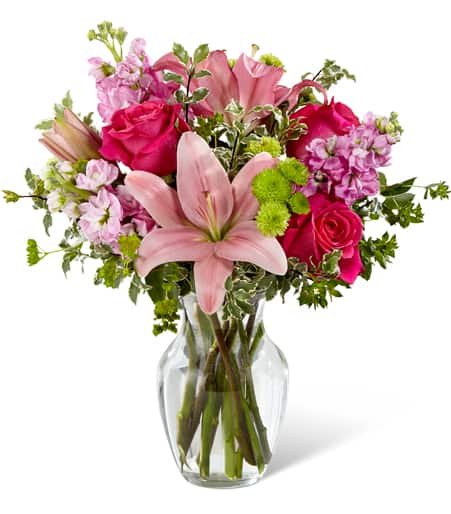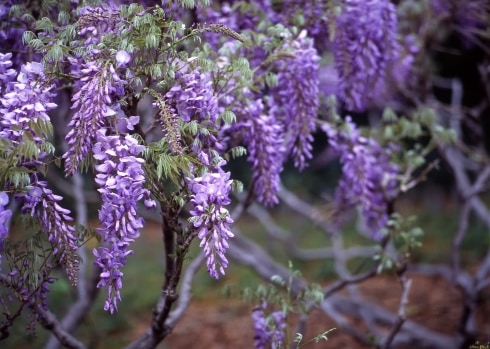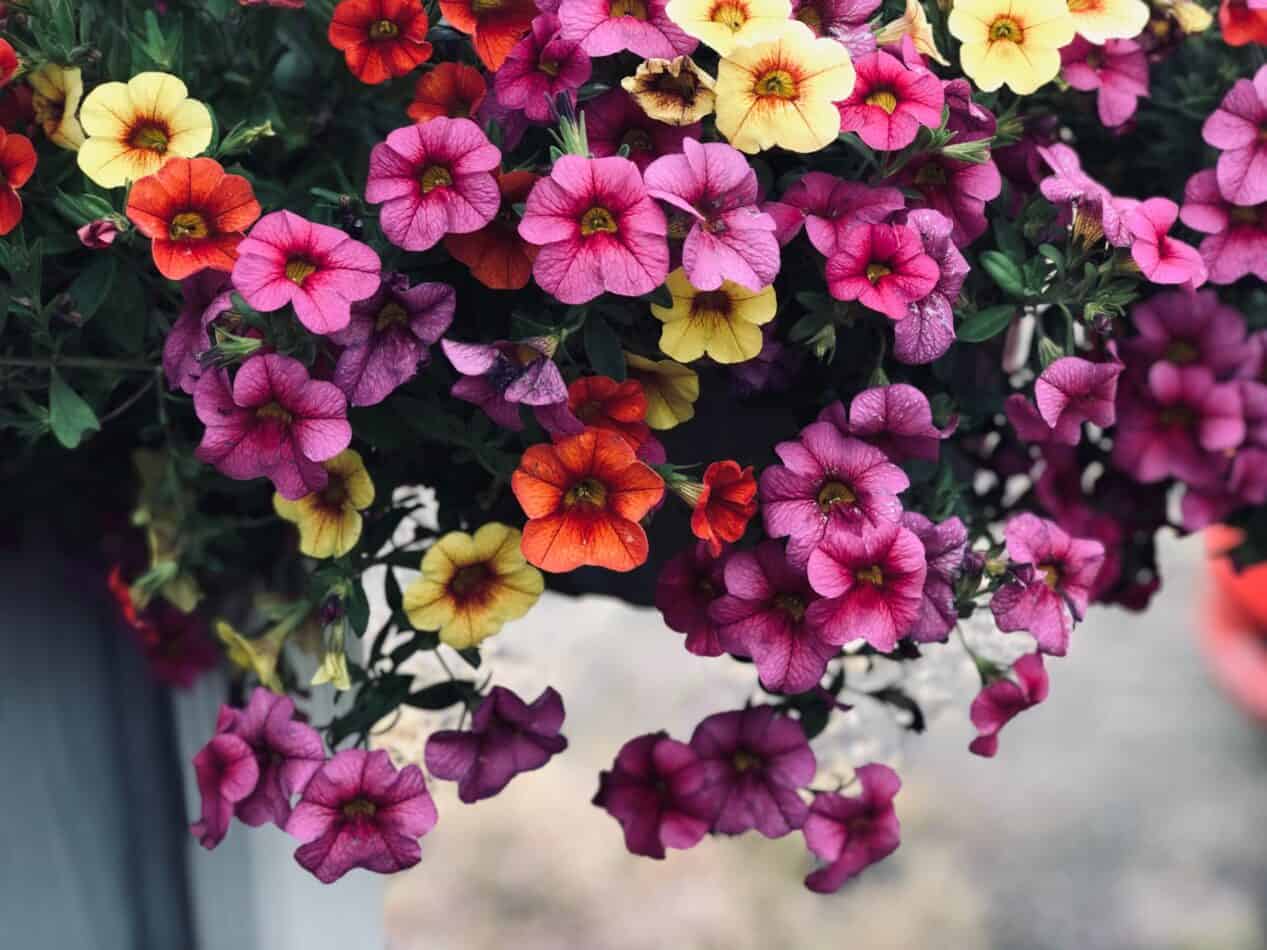American Wisteria, (Wisteria frutescens), is a charming ornamental climber that is becoming increasingly popular in gardens around the world. This flowering vine is native to North America and widespread throughout the Southeast, from Texas and Oklahoma to northern Florida and North Carolina. This plant is a vigorous twining vine, typically growing up to 30 feet tall, although in ideal conditions it can reach even greater heights.
The flowers are a focal point of the plant, and will certainly draw eyes from the garden. From late spring through to summer, this plant bears pendulous clusters of flowers, six inches in length, filled with fragrant, pea-like blooms. These blooms range in color from lilac to white or pink.
This lovely plant has proven to be an ideal choice for gardeners as it is traditionally less damaging to structures than the Chinese or Japanese varieties. It favors a solid structure such as a trellis or pergola to support its twining branches once it matures and becomes very heavy. A well-maintained American Wisteria can be a spectacular feature in any garden.

Buy American Wisteria seeds on Amazon>>
Family
American Wisteria is a species of the Wisteria genus, which is part of the Fabaceae family, which is also known as the legume, pea, or bean family. The Fabaceae family consists of over 700 genera and almost 20,000 species, and is found in nearly every type of habitat on the planet. It is best known for plants used for agricultural purposes, such as soybean, clover, alfalfa and peas.
Plant Type
American Wisteria is a vigorous, woody perennial climber, meaning it can be expected to live for multiple years, and will often need to be pruned back or trained to keep it in check.
Mature Size
American Wisteria can grow to a whopping 30 feet in length, and it may take several years for it to reach its full potential. The stems of this sprawling climber may be either twining or intertwining, depending on the variety.
Sun Exposure
American Wisteria does best in full sun, however it is quite tolerant of partial shade, especially in the hotter climates of the United States.
Soil Type
American Wisteria favors a rich, loamy soil, however it is not so picky to not survive in many different soil types, as long as they are well-draining.
Soil pH
This plant can survive in a range of soil pH, however it prefers soil with a pH of 5.5 – 8. It is important to know the exact pH of your soil before planting as this will help you choose compatible plants.
Bloom Time
American Wisteria is a stunning showstopper when in full bloom. The flowers of this plant will typically appear in late spring or early summer, typically between April and June, although in some regions they can bloom as late as October. The blooms will last for several weeks, and may be re-bloomed with pruning.
Flower Color
The pea-like flowers of American Wisteria come in an array of colors, ranging from lilac to white or pink. The most common variety is the lilac-colored flowers, typically found in North American gardens.
Hardiness Zones
American Wisteria is a hardy plant, with a USDA Hardiness zone of 5-9. This means that it is capable to survive in temperatures as low as -20 °F.

Buy this Flower Bouquet on FloristOne>>
Native Area
The native range of American Wisteria is the Atlantic coastal plains of the southeastern United States, extending west to Texas, Oklahoma, and eastern Kansas. It is still popular in these parts, although it has become increasingly popular internationally.
Propagation
Propagating American Wisteria is a great way to increase your plantings, and also to share with friends. Propagation can be achieved either from seeds, cuttings, or layering.
Seeds
Seeds of American Wisteria require pre-treatment, such as stratifying, for them to germinate, so this may be the longest and most challenging way to propagate. Seeds may be collected in late summer and stored in a cool dry place until the stratification processes can begin in the spring. The stratification process will consist of a period of up to 90 days alternating between warm and cold temperatures.
Cuttings
Cuttings are a great way to propagate American Wisteria. The cuttings can be taken when the plant is actively regrowing in the spring, and should have at least 2-3 leaves. These cuttings should be treated with rooting hormone and placed into a soilless medium, such as sand, perlite, or coco fiber. The cuttings will need to be kept moist until the roots have been established.
Layering
Layering is the simplest way of propagating American Wisteria and involves no rooting hormone. The vine should be bent to the ground, with a length of stem covered in soil. The soil must be kept moderately moist during the layering process, which will typically take several months for the roots to be established. Once the roots have formed, the stem should be carefully cut from the parent plant and transplanted.
Common Pests & Diseases
American Wisteria is a hardy plant and is not susceptible to major pest issues. Spider mites and other sap-feeding insects can still infest the plant, and should be treated with an approved insecticide or miticide.
Fungal diseases can also affect American Wisteria, with the most common being Leaf Spot, which will appear as circular spots with red or purple borders. This can be stopped or prevented by avoiding overhead irrigation and removing infected leaves when pruning.
Frequently Asked Questions
Q: Can I grow American Wisteria in pots?
A: Yes, American Wisteria can be grown both in the ground and in large pots. Be sure to use a fast-draining potting mix, and ensure that the pot is big enough to accommodate the roots as the vine grows and matures.
Q: Can American Wisteria be grown indoors?
A: American Wisteria can be a beautiful addition to an indoor garden, however it does best in full sun, which is not always possible to provide indoors. It will grow vigorous indoors, but will not flower.
Q: How often should I water American Wisteria?
A: American Wisteria should be allowed to dry out between waterings, but when it is actively growing and blooming, it will need to be watered at least once a week. Even in the cooler months, when it is not actively growing, water when the soil is dry down to 3 inches.
Table Fact Sheet
| Name | Description |
|---|---|
| American Wisteria | Wisteria frutescens |
| Family | Fabaceae |
| Plant Type | Vigorous, woody perennial climber |
| Mature Size | Up to 30 feet |
| Sun Exposure | Full sun to light shade |
| Soil Type | Rich, well-draining loam |
| Soil pH | 5.5-8 |
| Bloom Time | Late Spring to Early Summer |
| Flower Color | Lilac, white or pink |
| Hardiness Zones | 5-9 |
| Native Area | Atlantic coastal areas of the southeastern United States |
What we love from Amazon this week
Buy these wonderful flowers directly from Amazon:















